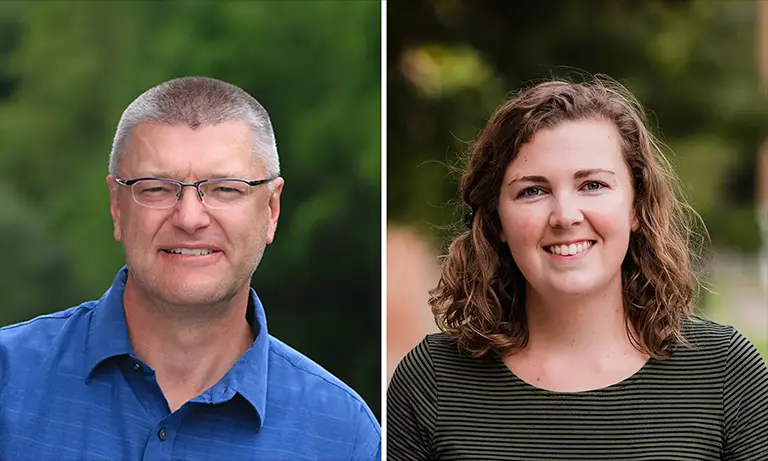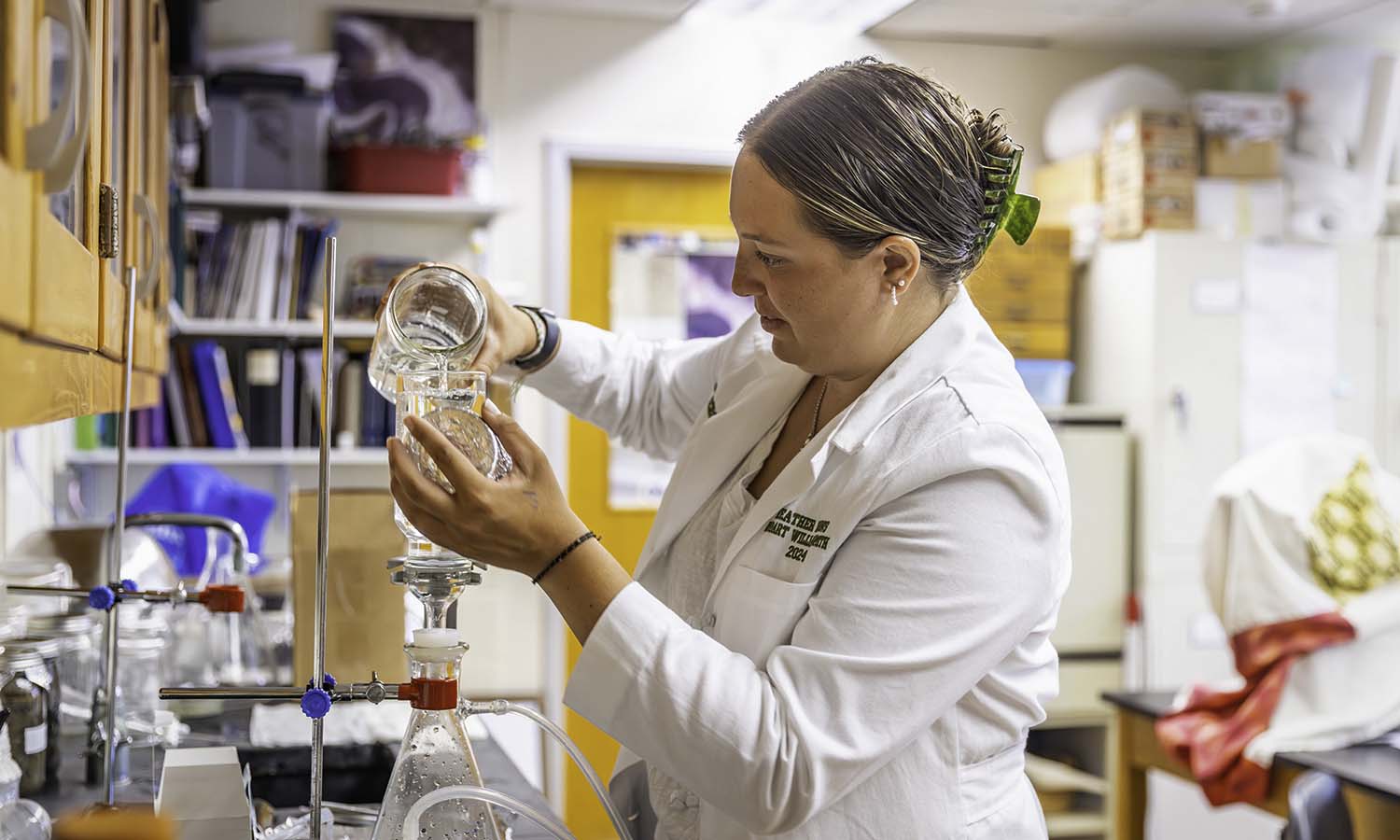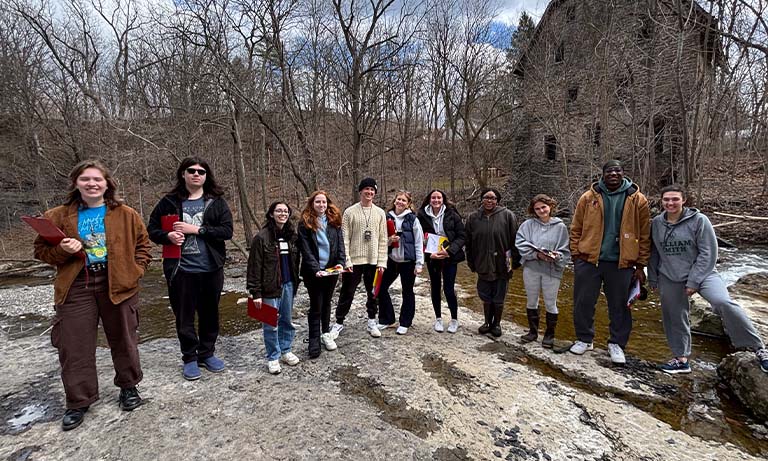
HWS News
26 February 2024 • Research • STEM Laird and Crossett '15 Publish on Weather and Visibility in Greenland
Influence of weather, such as fog, rain, and blowing snow on limiting visibility examined for a 40-year time period in Greenland to help explore hazardous coastal weather conditions.
In a recent article published in the International Journal of Climatology, Hobart and William Smith Professor of Geoscience Neil Laird and University of North Carolina at Asheville Assistant Professor of Atmospheric Sciences Caitlin Crossett ’15 explore the weather conditions that create hazardous visibility in Greenland and the weather responsible for limited visibility shifts based on location and season.
In “Weather conditions and seasonal variability of limited surface visibility at Greenland coastal locations,” Laird and Crossett examine surface visibility measurements that were collected at five research stations across the Greenland from 1979 to 2018. They found that hazardous visibility varied based on coastal location with the eastern coast of Greenland having the largest percentage of hours with limited visibility each month. Fog was reported monthly at each station with the highest percentage of fog in the northern and eastern stations in June, July and August. Cyclones across northeastern Canada and over the north Atlantic Ocean were found to influence the local adverse weather depending on coastal Greenland location.
“Greenland is a very active location for hazardous weather with rapidly changing weather conditions, especially in coastal locations,” says Laird of his interest to conduct this research that examines how often fog, rain, and blowing snow reduced visibility.
Crossett says that as Arctic air and ocean temperatures warm, it is unclear how occurrences of limited surface visibility will change in coastal locations across the Atlantic. “Therefore, establishing observed changes in surface visibility over the historical record would be necessary to understand how surface visibility may change as our climate does,” she says.
The project idea began nearly 10 years ago during Laird’s course “Polar Meteorology.” The work was then expanded on by Laird’s summer student researchers as part of the Northeast Partnership for Atmospheric and Related Sciences Research Experience for Undergraduates (NEPARS REU; https://www.hws.edu/academics/nepars-reu/). After the preliminary findings were presented by students at an American Meteorological Society conference and received great interest, Laird knew they needed to publish the research.
Crossett returned to HWS in 2022 as a post-doctorate research associate in the geoscience department and assisted in the research.
“As an alum of HWS, it was a really great experience to return to HWS as a post-doctorate researcher after graduate school and work with Neil, who was my undergraduate adviser,” says Crossett.
Laird joined the HWS faculty in 2001 and has maintained an active research program at HWS involving undergraduate students with funding from the National Science Foundation and the National Oceanic and Atmospheric Administration for projects that are collaborative with several research scientists and weather forecasters. His work has appeared in the Journal of Applied Meteorology and Climatology, the International Journal of Biometeorology, the International Journal of Climatology and Weatherand Forecasting. He teaches courses that range from “Introduction to Meteorology,” “Climate Change Science,” to “Global Climates and Oceans,” and “Environmental Meteorology.” Laird holds a Bachelor of Science from the State University of New York at Oswego, and a Master of Science and doctorate from the University of Illinois at Urbana-Champaign.
Crossett has taught at UNCA since 2023. She previously served as a postdoctoral research associate in HWS’ Geoscience Department. At HWS, Crossett graduated cum laude in geoscience and conducted an Honors project with Assistant Professor of Geoscience Nicholas Metz on the cold surges along the African highlands, which was published in the Journal of Applied Meteorology and Climatology. She was a recipient of the Donald L. Woodrow Prize in Geoscience and served as president of Geoscience club. She holds a Master of Science in mathematical science from the University of Wisconsin-Milwaukee and a Ph.D. in civil and environmental engineering from the University of Vermont. Crossett has been featured in the Journal of Applied Meteorology Climatology, Hydrological Processes and Climate.



